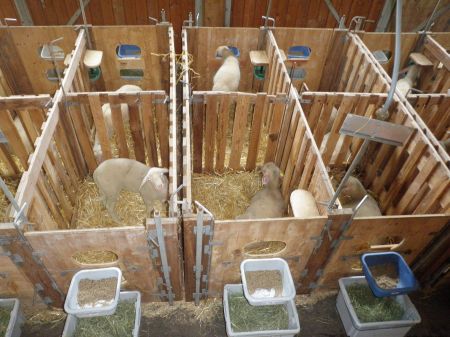Phytogenic feed additives based on herbs, spices and their extracts are offered to farmers. The use is intended to increase feed intake and improve feed conversion or stabilize the rumen flora. A feeding trial with 56 Merino sheep lambs will investigate whether this effect can also be observed in the fattening lambs.
In a fattening trial with 3 test groups (three different phytogenic feed additives A, B, C) and a control group (D) each with 14 fattening lambs, in which body weight and feed intake were regularly recorded, the thesis is that these additives have a positive effect on performance parameters (feed intake, daily weight gain, feed conversion, carcass and meat quality) can be examined.
The analysis of the rumen juice is intended to provide information about how the phytogenic feed additives work in the rumen.
56 Merino sheep lambs are purchased as test animals, if possible from a farm. The lambs are divided equally into the 3 experimental groups (A, B, C) and the control group (D) according to weight, age, birth type and gender. The animals are housed in individual boxes with visual and physical contact with neighboring animals. After an adaptation phase of 7 days, data recording begins. The animals receive the respective concentrated feed as well as hay and water ad libitum. Feed intake is determined daily and the weight of the lambs is recorded weekly. Before slaughter, the meat performance index is determined using ultrasound. Immediately upon slaughter, rumen juice is taken from 20 animals (5 per group) to analyze the concentration of volatile fatty acids. The carcasses are classified according to the EUROP system. A sample is taken from the back for the tests to determine the quality of the meat (shearing force, color, dripping juice, cooking and grilling loss, fatty acids).







